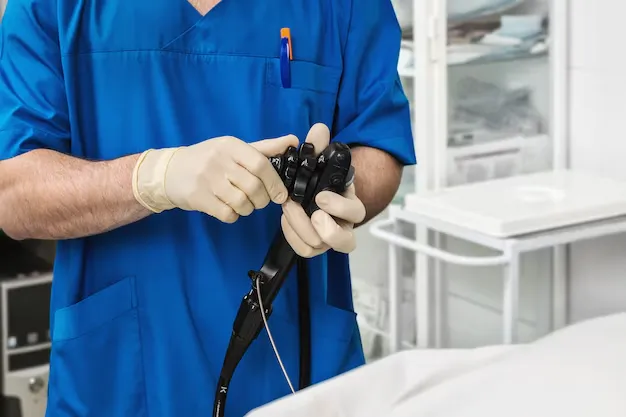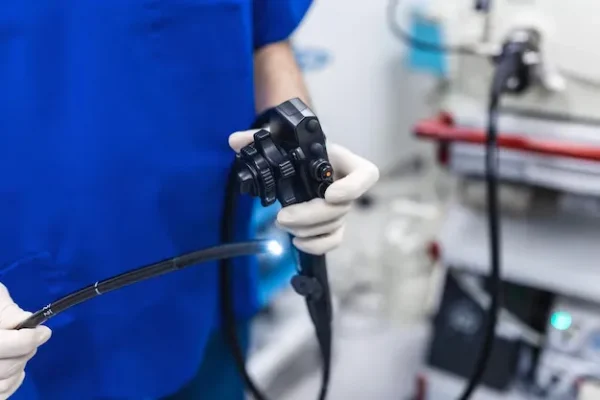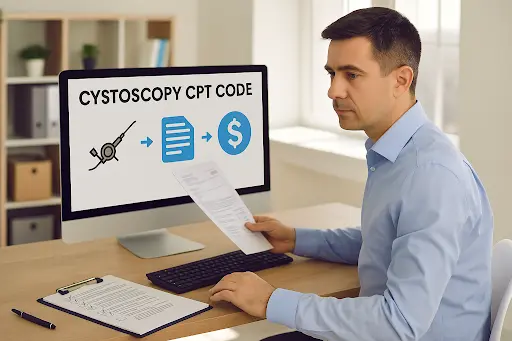If you’ve ever heard someone use “EGD” and “endoscopy” like they’re the exact same thing… well, technically, they’re not wrong. But they’re also not giving you the full picture.
This is one of those moments where providers can get tripped up. Because while every EGD is an endoscopy, not every endoscopy is an EGD.
And when it comes to medical coding, documentation, and even patient communication, knowing the difference matters.
At Cadence Collaborative, we see this mix-up all the time — and it’s usually during claim reviews, prior authorizations, or when patients call asking, “Wait… what procedure am I actually getting?”
So let’s break it down in a way that’s simple, accurate, and immediately useful.
What Is an Endoscopy?
Let’s start broad.
An endoscopy is any procedure where a provider uses a flexible tube with a camera (an endoscope) to look inside the body. It’s a general term, kind of like saying “imaging test” without specifying whether you mean an X-ray, MRI, or CT scan.
Types of Endoscopy
- Upper endoscopy (EGD)
- Colonoscopy
- Bronchoscopy
- Cystoscopy
- Laryngoscopy
So yes, EGD is a type of endoscopy, but the word “endoscopy” on its own could refer to dozens of different procedures.
What Is an EGD (Esophagogastroduodenoscopy)?
Now let’s get specific.
EGD stands for Esophagogastroduodenoscopy (try saying that three times fast). Most people just call it an upper endoscopy— and honestly, that’s fair.
An EGD is a procedure where a provider uses an endoscope to examine three key areas:
- The esophagus
- The stomach
- The duodenum (which is the first part of the small intestine)
The goal? To diagnose or treat conditions like:
- Ulcers
- Gastroesophageal reflux disease (GERD)
- Bleeding in the upper GI tract
- Barrett’s esophagus
- Tumors or growths
Sometimes it’s purely diagnostic. Other times, it’s therapeutic, meaning the provider may take a biopsy, stop a bleed, or dilate a narrowing (stricture) during the same procedure.
How An EGD Is Documented
In medical coding and billing, an EGD almost always maps to CPT codes starting with 432 (like 43235 for diagnostic EGD, 43239 for EGD with biopsy, and so on).
Knowing that a procedure is an EGD — and not just any generic “endoscopy” — helps your billing team:
- Pick the correct CPT code
- Justify prior authorization
- Prevent denials based on procedural mismatch
- Ensure documentation supports the exact service performed
EGD vs. Endoscopy: The Key Differences
Let’s get to the part that trips people up the most. Yes, EGD is technically a type of endoscopy, but when someone uses the term “endoscopy” without specifying, it opens the door to confusion.
Here’s what really matters from an operational and billing standpoint.
1. Level of Specificity in Documentation
If a provider just writes “endoscopy performed” in the procedure note, coders are left guessing.
Are we talking about:
- An upper endoscopy (EGD)?
- A colonoscopy?
- A bronchoscopy?
- Something else entirely?
Why this matters: You can’t assign the right CPT code without knowing exactly which type of endoscopy was done. The more specific the documentation, the cleaner the billing.
2. CPT Coding Differences
Different endoscopic procedures map to totally different CPT code ranges:
- EGD procedures typically fall under 43200–43259
- Colonoscopy codes start with 453
- Bronchoscopy uses 316 series codes
- Laryngoscopy falls under 315
So if you just see the word “endoscopy” in the chart, you’re missing the codeable detail that directly affects revenue.
3. Preauthorization and Insurance Approvals
Some payers require specific preauthorization for EGDs, but not for other types of endoscopy — or vice versa.
If your team submits a generic “endoscopy” request without clarifying that it’s an EGD, the prior auth might get denied, or worse, delayed until the payer receives more info.
Pro Tip:
Always clarify the procedure type before starting the prior authorization process.
4. Clinical Indications and Medical Necessity
The reason for the procedure often dictates coverage. For example:
- An EGD may be approved for GERD, ulcers, or upper GI bleeding
- A colonoscopy might be approved for screening, polyps, or lower GI bleeding
If your documentation and coding don’t align with the clinical indication, expect denials, even if the procedure was medically necessary.
5. Patient Communication and Consent
Beyond billing, this confusion can affect patient understanding, too.
If a patient hears “endoscopy,” they may assume it’s a colonoscopy or something else entirely. Clear documentation and patient communication help avoid scheduling errors and informed consent issues.
Common Documentation Mistakes for EGDs (And How to Avoid Them)

For something that happens in clinics and hospitals every single day, EGDs still cause a surprising amount of coding headaches.
From vague notes to wrong CPT selection, the small details make a big difference when it comes to clean claims and fast reimbursements.
Here’s a breakdown of the most common mistakes we see and how your team can avoid them.
Mistake 1: Vague Procedure Notes That Just Say “Endoscopy”
Let’s start with the obvious one. When a provider documents “endoscopy performed” without clarifying which type, coders are left playing a guessing game.
And let’s be real: guessing in medical billing is never a good idea.
Why this matters:
Without specificity, your team can’t pick the right CPT code. This often leads to claim rejections or the dreaded “return to provider for clarification” workflow that nobody has time for.
How to avoid it:
Make it part of your provider training to always specify:
- Procedure type (EGD, colonoscopy, bronchoscopy, etc.)
- Whether it was diagnostic or therapeutic
- Any additional services (biopsy, dilation, control of bleeding, etc.)
Mistake 2: Forgetting to Document What Happened During the Procedure
Just stating that an EGD was performed isn’t enough for coding. Did the provider take biopsies? Remove a polyp? Control bleeding? Dilate a stricture?
Each of these services has its own CPT code or add-on code.
Real-world example:
If your gastroenterologist performed an EGD with biopsy but only documents “EGD performed,” you might accidentally bill 43235 (diagnostic only) instead of 43239 (EGD with biopsy). That’s a revenue loss.
How to avoid it:
Encourage detailed procedure notes with phrases like:
- “Biopsies obtained from…”
- “Polyp removed using cold forceps…”
- “Bleeding controlled via…”
- “Dilation performed up to X mm…”
Mistake 3: Coding Therapeutic EGDs as Diagnostic
This one’s big for revenue integrity. If your team automatically defaults to 43235 (diagnostic EGD) but the provider actually performed a therapeutic intervention, you’re undercoding — and leaving reimbursement on the table.
How to avoid it:
Set up coding workflows that flag all EGD cases for review if documentation mentions terms like:
- Biopsy
- Control of bleeding
- Foreign body removal
- Dilation
- Banding
- Injection therapy
Mistake 4: Missing Modifier Usage for Multiple Procedures
Sometimes, more than one procedure happens during the same EGD session. Maybe the provider did a biopsy and also controlled bleeding in a different location.
In those cases, you’ll often need to append modifiers (like Modifier 59) to show that these were distinct procedural services and not overlapping work.
How to avoid it: Coders should be able to recognize when multiple procedures require modifiers, and edits can be built into claim scrubbing systems to catch these issues before submission.
Mistake 5: Incorrect or Missing Diagnosis Codes
The CPT code tells payers what was done, but the ICD-10 diagnosis codes tell them why.
If the indication for the EGD was GERD, GI bleeding, or suspected ulcers, but the diagnosis code doesn’t reflect that, payers may deny the claim for lack of medical necessity.
How to avoid it:
Procedure notes should be cross-checked with associated diagnoses, and the most specific ICD-10 codes should be used whenever supported by documentation.
For example:
- Instead of K21.9 (GERD, unspecified), use K21.0 (GERD with esophagitis) if that’s what the provider documented.
CPT Code Ranges: EGD vs. Other Types of Endoscopy

When it comes to endoscopic procedures, it’s easy to assume they all fall under the same umbrella. After all, they all involve scopes, cameras, and sedation, right?
But when you’re looking at it through the lens of medical billing and coding, those details matter more than most people realize.
Each type of endoscopy has its own CPT code range, tied directly to the anatomy examined and the complexity of the procedure.
Getting this wrong doesn’t just mean a coding error. It can cause denials, revenue loss, and create confusion across scheduling, prior auth teams, and clinical documentation workflows.
Let’s walk through the key differences and why coding and RCM processes should always include a second review before CPT selection.
EGD (Esophagogastroduodenoscopy) CPT Codes: 43200–43259
If the provider performed an upper endoscopy, meaning the scope went through the mouth to visualize the esophagus, stomach, and duodenum, you’re working in the 43200–43259 CPT code range.
The variety within this range is bigger than most people think. It’s not just about “scope in, scope out.”
The coding changes are based on what happened during the procedure:
- Was it purely diagnostic?
- Did they take a biopsy?
- Was there a polyp removal?
- Did they control bleeding?
For example:
- 43235 covers a simple diagnostic EGD.
- 43239 captures an EGD with biopsy.
- 43255 represents an EGD with control of bleeding.
Colonoscopy CPT Codes: 45378–45398
Colonoscopy coding often trips up teams who don’t routinely handle GI billing. While both EGDs and colonoscopies fall under the broad “endoscopy” umbrella, their CPT code ranges couldn’t be more different.
Colonoscopy codes live in the 45300 range, with the most common starting points between 45378 and 45398.
The key anatomical difference?
Colonoscopy starts at the rectum and travels through the large intestine, while an EGD stays entirely in the upper GI tract.
This distinction is critical, especially when dealing with prior authorization and payer policies.
Submitting a colonoscopy CPT for an EGD — or vice versa — is an almost guaranteed denial.
Bronchoscopy CPT Codes: 31622–31651
Bronchoscopies are another common source of confusion, especially in organizations that serve both GI and pulmonary specialties.
Bronchoscopy codes (31622–31651) apply when the scope is inserted into the trachea and bronchi, often for lung-related diagnoses like:
- Chronic cough
- Hemoptysis (coughing up blood)
- Lung mass evaluation
The workflow, sedation, and even the equipment may feel similar to GI endoscopies, but from a billing and coding perspective, they are entirely separate services with their own CPT range.
Laryngoscopy CPT Codes: 31505–31579
For ENT providers, laryngoscopy codes cover procedures focused on the larynx and vocal cords.
Though less common in GI practices, the confusion often arises in large multi-specialty settings where coders may work across different departments.
Common uses for these codes include:
- Evaluation of hoarseness
- Vocal cord paralysis
- Tumor surveillance in the throat
Again, different CPT range, different specialty, and very different medical necessity requirements.
Quick Reference Tip for Teams
Consider creating a cheat sheet or internal coding reference guide that lists:
- Each endoscopy type
- Its corresponding CPT range
- Common diagnosis codes linked to each
- Prior auth requirements by the payer
- Modifier usage tips for multi-service procedures
Having this handy helps not just coders, but also schedulers, pre-auth teams, and clinical staff stay aligned.
Final Checklist: Are You Coding EGDs Correctly?
Before you finalize that claim, send that prior auth, or lock in your documentation, pause, and run through this quick check:
- Is the procedure clearly documented as an EGD (not just a generic “endoscopy”)?
- Did the provider specify whether it was diagnostic or therapeutic?
- Are all relevant CPT codes selected based on what actually happened during the procedure?
- Have you captured and linked the correct ICD-10 diagnosis codes that justify the service?
- If multiple procedures were done, have you applied the appropriate modifiers (like 59)?
- Are payer-specific guidelines being followed for EGD coverage and prior authorization?
- Are coding workflows designed to flag incomplete documentation before billing?
- Are your coding workflows designed to flag incomplete documentation before billing?
If the answer is “yes” to all of these, your EGD billing process is in great shape.
Need Help Fine-Tuning Your Medical Billing and Coding Workflows?
At Cadence Collaborative, we help healthcare organizations streamline everything from procedure documentation to medical billing, ICD-10 coding, and revenue cycle management.
Whether you’re dealing with EGD coding challenges, reducing denials, or just trying to make your billing workflows run smoother, our team is here to help.
We work side by side with clinical, coding, and billing teams to close gaps, improve accuracy, and protect your revenue.
Contact us to build a billing process that works as well as the care you deliver.






